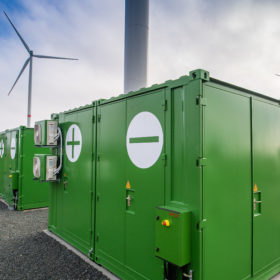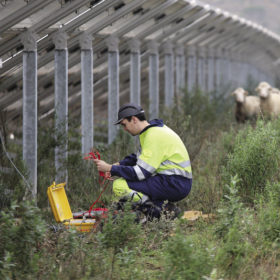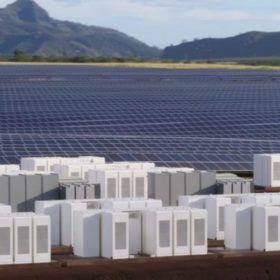Australia will need 15 GW of utility scale storage by early 2040s
Increased storage and strategic transmission development will be needed to ensure the most economic and lowest risk transition of Australia’s energy system, the Australian Energy Market Operator said in its latest study. In 20 years’ time, the need for storage will be at a scale not seen before in the national electricity market, and pumped hydro and distributed storage are set to play major roles in lowering electricity prices and building a reliable and resilient power system.
Has solar lost its sheen for India’s EV push?
While the nation’s recent Union budget announced steps to create an electric vehicle market, the solar sector still has issues that have not been addressed.
When the battery is a building… or vice versa
AES has announced the start of construction of its Alamito Energy Center, a 100 MW/400 MWh battery for electric utility SoCalEdison which is being constructed as a full-on building – much like a data center.
Energy sector gets first open-source, tailor-made blockchain
A public enterprise grade energy blockchain has powered up with the promise to accelerate a low-carbon, distributed electricity future. For the first time, energy sector companies are hosting validator nodes on a decentralized network as they seek to adapt to a more digitalized and decentralized energy system.
Comtec sells slice of EV unit to online gaming company The9
The Nasdaq-listed game developer will offer shares in return for a 9.9% stake in the Chinese mono solar manufacturer’s Kexin electric vehicle and storage business.
UK government may step in to impose minimum price for solar power sold to the grid
The launch of the U.K. Smart Export Guarantee regime today failed to include a price floor – as predicted by trade body the STA – but the government did not rule out future intervention. Commercial customers, however, still have no way of securing payment for their excess power.
Solar, EVs and energy storage among the few technologies keeping pace with energy transition goals
Among 45 critical energy technologies and sectors assessed in a tracking report by the International Energy Agency, only seven are keeping hopes alive that climate, energy access and air pollution goals can be met.
Pumped hydro with better financing can compete with batteries
Pumped hydro storage is highly cost competitive for large-scale energy storage, according to a report published by the San Diego County Water Authority. The report models a pumped hydro project as securing better financing terms than battery storage.
Storage set to come of age in the next five years
The transition for utility scale storage from offering short duration, high value grid services to the world of long duration energy peaking could spell the end of fossil fuel backup generation within five years.
Canada’s new budget plan eyes efficiency, EVs and community energy
The new budget looks to lower the cost of energy for households by turning to distributed energy, energy efficiency and community energy programs. To this end, several billion Canadian dollars will be spent.










